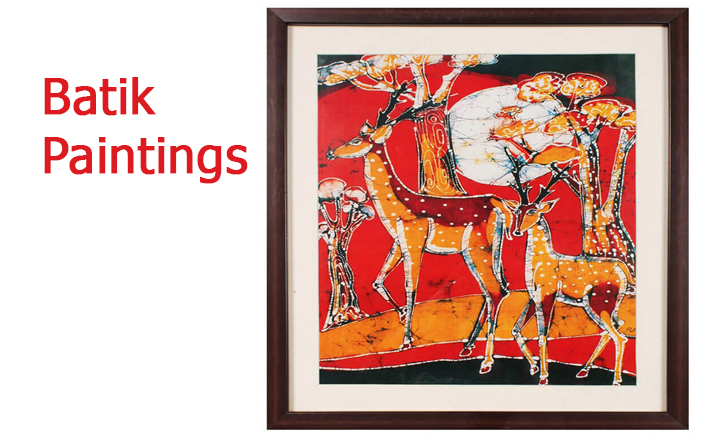An Exuberant, Historic Painting Tradition

The world of handlooms is a fascinating arena, where art forms have evolved over the years. Some of these traditions have enriched different cultures, with their ancient roots. Batik painting is one such highly beautiful and historic art form. The paintings represent a stunningly unique form of art involving various figures and patterns drawn on the pieces of fabrics. These paintings are believed to have originated in Indonesia where the original word referred to the ‘dots on clothes’.
Batik represents the wax-resist dye technique, used in textiles. This art is believed to be about two thousand years old. Batik art work is widely practised in regions like Java (Indonesia) and India. India is known for its rich tradition in Batik paintings and truly exquisite works of Batik art continue to be procured from different regions of India. Batik artists make use of dyes as color. This is an integral part of the batik art work. A batik artist should have a good sense of the colors and patterns. For creating an attractive piece of Batik painting, the batik artist works with more emphasis on color, wherein multiple layers of wax and dye is applied to the fabric.
The Process of Creating Batik Art!
- Batik actually refers to a process of decorating cloth where one part of this cloth is covered with a coat of wax followed by dyeing of the cloth.
- The waxed areas would retain their original color and after wax is removed, the contrast levels between the dyed and the non-dyed areas give an attractive pattern.
- The elaborate art of Batik is actually a three-stage process which involves stages like waxing, dyeing and also dewaxing (removing the wax). There are other sub-processes as well like preparing the cloths and the designs, where the cloth is stretched on the frame followed by waxing the area of the cloth that does not need dyeing.
- This is followed by preparing the dye, dipping the cloth in the dye and eventually boiling the cloth for removing wax and washing of the dyed cloth in soap.
- The entire process of waxing, dyeing and de-waxing is even repeated multiple times until the whole batik design or fabric is completed.
- The characteristic designs of batik are observed due to the fine cracks appearing in the wax, which ensures that the small amounts of the dye, actually seeps in.
Batik waxing is considered an important part of the entire process of batik printing. The common batik fabrics which are used for excellent batik prints are poplin, voiles, cambric, and pure silk. Natural colors that are derived from barks of trees, flower, leaves, and minerals are also used. Batik is also made in several ways such as screen-printing method, splash method, and the hand painting one with the help of a Kalamkari pen. Each piece of Batik painting has a unique feel as a result of the endless combinations of the dye coloring, wax effects and the fabric types.
The Batik painting technique also involves great precision and concentration. Traditionally, the Batik paintings are made of dark brown, indigo and white colors, representing the three major Hindu Gods i.e. Brahma, Vishnu and Shiva. Batik printed saris, kurtis and wrappers are some of the most preferred choices among the fashion loving people. Indian cotton and dyes are used widely in Batik.